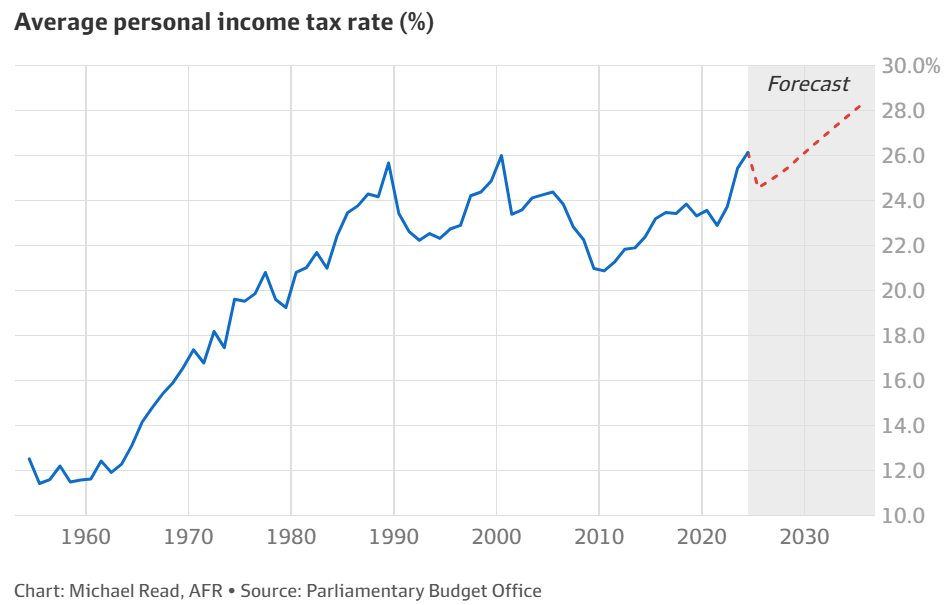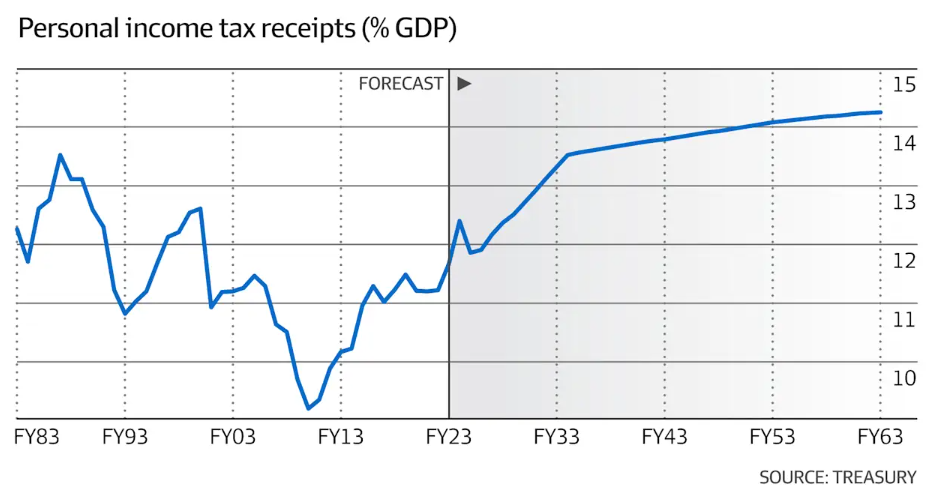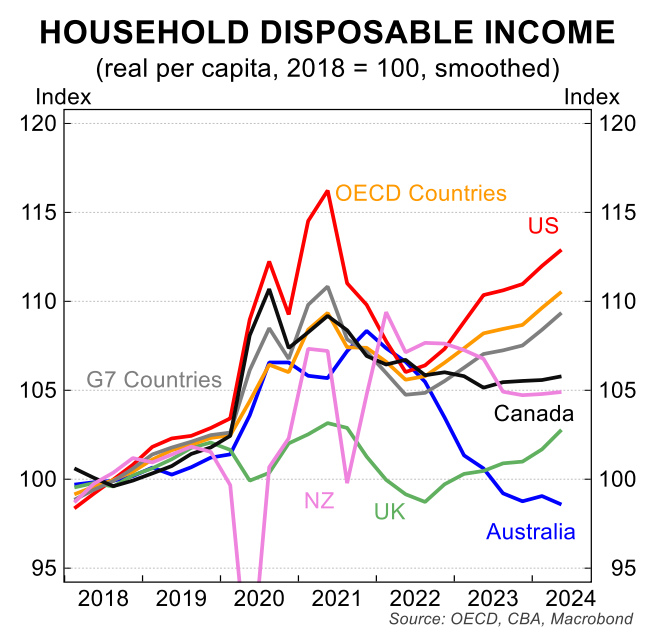Earlier this year, economist Chris Murphy noted that the historical effective average income tax rate in the first two decades of this century was 23%.
Even with stage three income tax cuts worth around $23 billion per year, Murphy warned that bracket creep would lift the average tax rate by two percentage points to 25% by 2028–29.
“Paying for that will be a declining share of the population who are the prime working age between 25 and 54, due to population ageing and the imbalance in the budget”, he said.

Around half of developed nations automatically index their tax scales to account for inflation or wage growth.
No such indexation system exists in Australia, with so-called ‘bracket creep’ resulting in taxes comprising a rising share of workers’ incomes over the decades.
The Australian Treasury warned on Thursday that a shrinking share of the population will shoulder the burden of paying income tax as the nation’s population ages.
“Over time, without government intervention, bracket creep will also result in rising average tax rates”, Treasury said.

“High effective marginal tax rates (including means testing of benefits) can disincentivise labour market participation and savings and discourage investment in skills”, Treasury said.
“These effects may be particularly pronounced for second earners – often women. High marginal tax rates can also exacerbate tax planning”.
Former Treasury official and banker, David Morgan, is among the voices calling for Australia’s income taxes to be automatically indexed to inflation.
“Any increases in the personal tax rates on various real income levels should be legislated explicitly, not left to the haphazard vagaries of inflation”, Morgan told The AFR.
“Moreover, the proportionate increase in those real tax rates under an unindexed system tends to be highest for the lower income groups”.
Morgan’s view is supported by Westpac chief executive Anthony Miller, who argued that regularly adjusting personal income tax scales is “very common around the world” and “complements and works in partnership with the monetary policy settings”.
Menzies Research Centre chief economist Nico Louw added that “indexation isn’t new spending, it’s simply stopping unjustified tax grabs before they start”.
“Some will say indexation is unaffordable. But the real risk is a system that quietly raises taxes on millions without a vote, a debate or a mandate”.
Australian households have experienced a world-record decline in real disposable income per capita.

This decline in disposable incomes was partly driven by rising average tax rates, which reduced workers’ take-home pay.
Without policy changes, average tax rates are expected to rise inexorably in the coming years.
As a result, rising personal income taxes will represent a constant drag on real disposable income for the diminishing pool of working Australians.
This emphasises the importance of fundamental tax reform that broadens the base beyond personal income taxes to more efficient sources such as resources, land, and consumption.
It is unfair and inefficient to continue raising taxes on a diminishing workforce to pay for services and infrastructure for the entire population. The burden must be shared.

